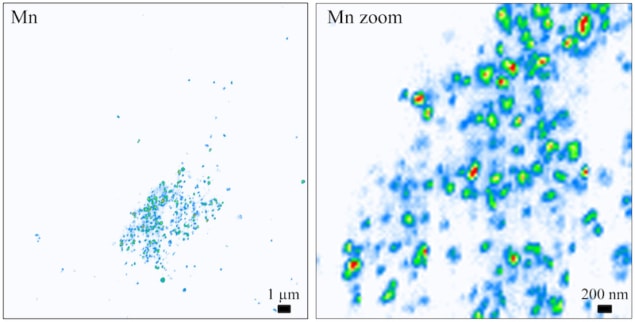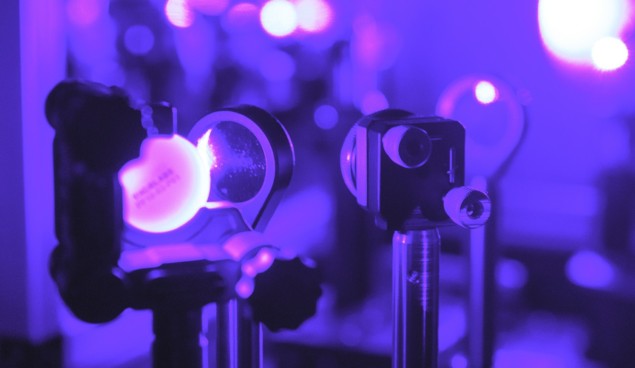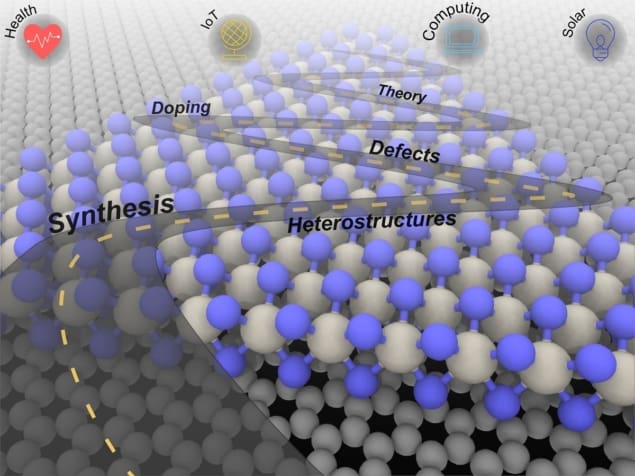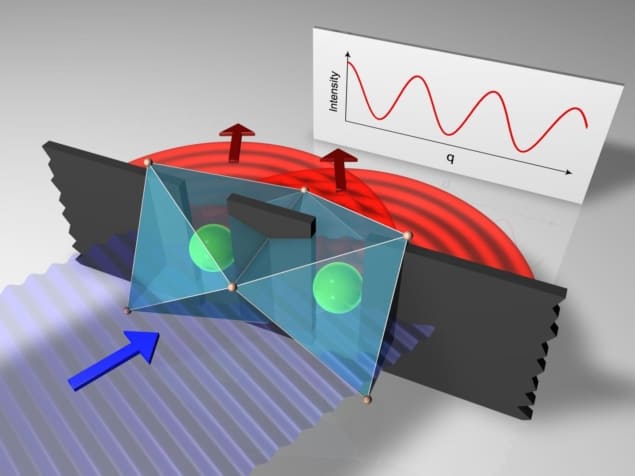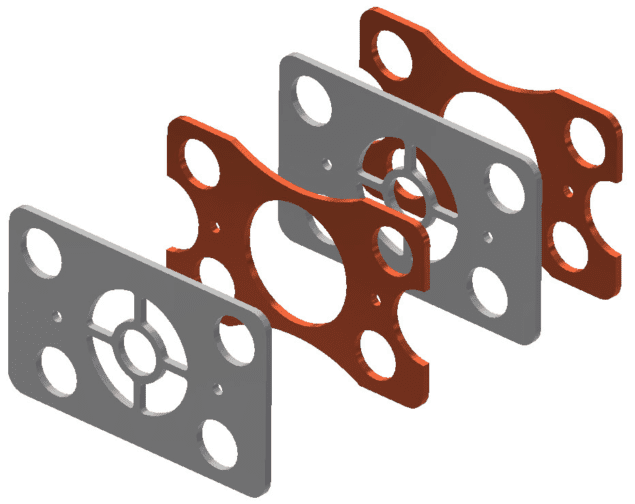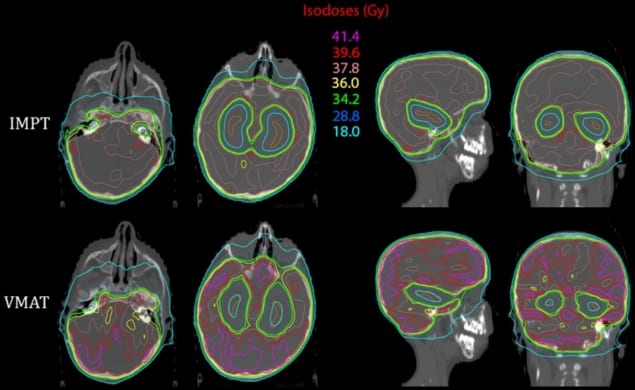ΦΥΣΙΚΗ Β ΛΥΚΕΙΟΥ ΠΡΟΣΝΑΤΟΛΙΣΜΟΥ ΘΕΤΙΚΩΝ ΣΠΟΥΔΩΝ - (ΘΕΩΡΙΑ: ΘΕΡΜΙΚΕΣ ΜΗΧΑΝΕΣ ΚΑΙ ΤΥΠΟΙ ΜΗΧΑΝΩΝ)
Αναζήτηση αναρτήσεων
Πέμπτη 31 Ιανουαρίου 2019
Τρίτη 29 Ιανουαρίου 2019
Βρέθηκε η θεραπεία του καρκίνου;
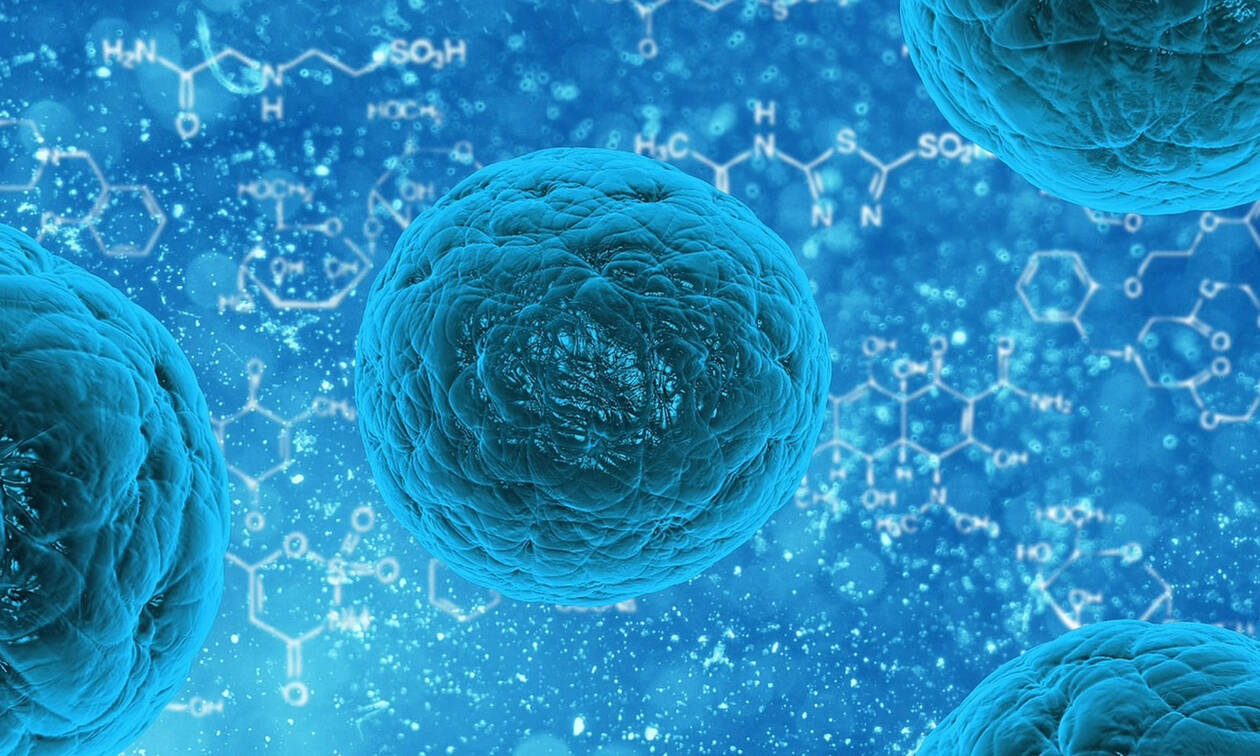
Η θεραπεία θα είναι αποτελεσματική από την πρώτη ημέρα
Μία ολοκληρωμένη θεραπεία για όλους τους τύπους καρκίνων ισχυρίζεται ότι είναι πιθανό να αναπτύξει μια ομάδα Ισραηλινών επιστημόνων, σύμφωνα με δημοσίευμα της Jerusalem Post.
«Πιστεύουμε ότι θα είμαστε σε θέση μέσα σε έναν χρόνο να παρουσιάσουμε μια ολοκληρωμένη θεραπεία για τον καρκίνο» δήλωσε στην εφημερίδα ο Dan Aridor, πρόεδρος του διοικητικού συμβουλίου της εταιρείας Accelerated Evolution Biotechnologies, που αναπτύσσει τη νέα θεραπεία.
«Η θεραπεία μας για τον καρκίνο θα είναι αποτελεσματική από την πρώτη κιόλας μέρα χορήγησής της, θα διαρκεί μερικές εβδομάδες και θα έχει ελάχιστες ή και καθόλου παρενέργειες. Επίσης το κόστος της θα είναι αρκετά χαμηλότερο από τις άλλες θεραπείες που είναι διαθέσιμες στην αγορά», συμπλήρωσε, προσθέτοντας ότι θα είναι εξατομικευμένη για κάθε ασθενή.
Η θεραπεία ονομάζεται MuTaTo, (από τα αρχικά της φράσης "multi-target toxin"). Το φάρμακο λειτουργεί ως αντιβιοτικό κατά του καρκίνου και χρησιμοποιεί έναν συνδυασμό πεπτιδίων που καταπολεμούν τον καρκίνο και μια τοξίνη που «σκοτώνει» στοχευμένα καρκινικά κύτταρα.
Οι Ισραηλινοί επιστήμονες εξέτασαν γιατί τα προηγούμενα φάρμακα για τον καρκίνο απέτυχαν.
Ένας λόγος για τον οποίο αποτυγχάνουν τα φάρμακα κατά του καρκίνου είναι επειδή επιτίθενται μόνο σε ένα συγκεκριμένο στόχο μέσα ή πάνω σε ένα καρκινικό κύτταρο κάθε φορά. Οι μεταλλάξεις στα καρκινικά κύτταρα καθιστούν τα αντικαρκινικά φάρμακα αναποτελεσματικά.
Ωστόσο, το MuTaTo χρησιμοποιεί αρκετά καρκινικά στοχευμένα πεπτίδια ταυτόχρονα σε ένα μόνο καρκινικό κύτταρο, μαζί με μια τοξίνη που καταστρέφει τον καρκίνο.
Δευτέρα 28 Ιανουαρίου 2019
Squeezed graphene becomes a superconductor
Squeezed graphene becomes a superconductor
28 Jan 2019
Twisted bilayer graphene can be made into a superconductor by simply squeezing the two layers closer together – according to an international team of physicists. Observation of the effect confirms a key prediction about the causes of correlated electron phenomena in bilayer graphene and could potentially help to unravel the puzzle of unconventional superconductivity.
This effect was predicted several years ago by independent teams in Chile and the US, who calculated that when two layers are twisted by a “magic angle” of about 1.1° relative to each other, “flat bands” occur, in which the kinetic energy of the electrons is almost independent of their momentum.Graphene is a sheet of carbon just one atom thick and its remarkable electronic properties have captivated physicists since the free-standing material was first isolated in 2004. While much work has been done on the properties of electrons within graphene sheets, researchers have also become interested in the weak coupling that occurs between electrons in bilayers of graphene.
The quantum Y2K moment
The quantum Y2K moment
03 Dec 2018 Margaret Harris
The advent of quantum computers threatens many of the encryption systems that keep online communications secure and make e-commerce possible. Margaret Harrisinvestigates plans to make the Internet safe for the quantum era

Winfried Hensinger wants to build a computer the size of a football pitch. He’s aware that the idea may be a tough sell. Scientists and engineers have laboured for decades to transform the room-sized machines of the 1940s and 1950s into devices that fit on a desk, in the palm of your hand, and even – as with a chip unveiled at IBM last March – inside a grain of salt. Why would anyone take such a gigantic step backwards?
The answer lies in the architecture of Hensinger’s proposed machine. Instead of performing calculations with classical 0s and 1s, the computer he and colleagues at the University of Sussex in the UK hope to build would exploit the quantum properties of a billion ytterbium ions. Hensinger’s blueprint calls for these ions to be kept aloof from their environment with magnets and individually shuttled into interaction zones within a vast grid of microfabricated traps, using a field of microwave radiation to control their movements. The result, he says, would be a computer that can unravel “tremendously complicated problems that would take billions of years to solve on even the fastest supercomputers”.
Your pathway to a future in nuclear science
Your pathway to a future in nuclear science
21 Sep 2018 Sponsored by NTEC
Postgraduate training that is personalized, flexible and taught by experts – that is what’s on offer from the Nuclear Technology Education Consortium (NTEC), whose novel courses aim to create the UK’s next generation of nuclear experts, with the skills to secure a sustainable and safe nuclear industry

“What we offer is a vocational programme, the whole goal of which is to support the nuclear industry,” says John Roberts of The University of Manchester. NTEC was formed in 2005 to tackle concerns that not enough students were graduating from UK universities to meet the needs of the nuclear sector, be it in operation, decommissioning or new build. It was set up following detailed consultations with the whole of the UK nuclear sector including businesses, regulators, the Ministry of Defence, the Nuclear Decommissioning Authority, government departments and the Cogent Sector Skills Council.
Seven institutions – the universities of Birmingham, Central Lancashire, Leeds, Liverpool, Manchester and Sheffield, as well as the Nuclear Department of the Defence Academy – provide 14 different modules that are directly taught, with nine of these also available in a distance-learning format. Students graduate with an MSc, a postgraduate certificate, a diploma or a continuous professional development (CPD) accreditation.
Real-time measurements reveal chaotic vibration in carbon nanotubes
Real-time measurements reveal chaotic vibration in carbon nanotubes
28 Jan 2019 Alex Petkov
Scientists in the US have used a novel photonic microscope to make the first real-time observations of thermal vibrations in carbon nanotubes (CNTs). Their results reveal a rich dynamical regime that has not yet been explored in these miniature resonators, including weakly chaotic behaviour and quasi-periodic modulations that yield a long-range coherence about three orders of magnitude higher than previously reported.
Scientists have long been interested in the mechanical vibrations of CNTs for use in applications such as nanoscale biosensors, but probing these dynamics has proved challenging. Standard electrical techniques tend to produce noise, while electron microscopes can cause unwanted material deposition on CNTs at room temperature. Even optical detection presents a problem as the tiny optical cross-section of CNTs causes most light to pass straight through them without any significant interaction.
Wearable patch measures sweat in extreme environments
Wearable patch measures sweat in extreme environments
26 Jan 2019
A research team led by John Rogers at Northwestern University in the US has unveiled a thin and robust sweat sensor that is capable of monitoring hydration during exercise. The circular patch, with a width of just 30 mm, works underwater and in dry, arid environments – which makes it ideal for monitoring fluid loss during swimming, triathlons, ultramarathons and many other endurance sports.
Since people sweat at different rates, it is very difficult to know how much fluid athletes lose through perspiration. This can be a major problem, as drinking too much water can lead to hyponatremia, which in acute cases can cause headaches, seizures or even coma. Meanwhile, drinking too little risks hypohydration, which can produce extreme symptoms that include delirium as well as increased risk of heat stroke and death.
Is ozone less deadly than we thought?
Is ozone less deadly than we thought?
28 Jan 2019
Global premature mortality due to respiratory problems from ozone exposure is up to 60% lower than previously thought, researchers in the US and the UK have found.
The result comes from an analysis of ground-based data, rather than exposure estimates from computer models.
“I would certainly classify [the result] as good news,” says Karl Seltzer of Duke University, US. “The estimated health burden is still high, but not as high.”
There is much evidence linking both short-term and long-term ozone exposure to health problems such as respiratory diseases.
How does manganese produce Parkinsonian syndrome?
How does manganese produce Parkinsonian syndrome?
28 Jan 2019 Belle Dumé
Manganese is an essential element in the body at trace levels and is a cofactor in many enzymes and proteins but it is neurotoxic in high amounts, causing symptoms similar to Parkinson’s disease. A team of researchers in Bordeaux in France has now used organelle fluorescence microscopy combined with synchrotron X-ray fluorescence (SXRF) imaging to show that manganese accumulates in the Golgi apparatus of human cells that are transfected with a mutant protein that causes toxic build-up of manganese in cells. The single-cell imaging technique could help us better understand the mechanisms behind neurotoxicity in Parkinsonian syndrome and other neurological diseases.
Παρασκευή 25 Ιανουαρίου 2019
ΦΥΣΙΚΗ Β ΛΥΚΕΙΟΥ ΠΡΟΣΑΝΑΤΟΛΙΣΜΟΥ ΘΕΤΙΚΩΝ ΣΠΟΥΔΩΝ - (ΟΙ ΘΕΡΜΙΚΕΣ ΜΗΧΑΝΕΣ - ΘΕΩΡΙΑ)
ΦΥΣΙΚΗ Β ΛΥΚΕΙΟΥ ΠΡΟΣΑΝΑΤΟΛΙΣΜΟΥ ΘΕΤΙΚΩΝ ΣΠΟΥΔΩΝ - (ΟΙ ΘΕΡΜΙΚΕΣ ΜΗΧΑΝΕΣ - ΘΕΩΡΙΑ)
Europe unveils successor to the Large Hadron Collider
Europe unveils successor to the Large Hadron Collider
15 Jan 2019 Michael Banks
Physicists at CERN have unveiled a blueprint for a huge 100 km-circumference particle smasher that would be used to study the Higgs boson in unprecedented detail as well as search for new physics. Today, the conceptual design report has been released for the Future Circular Collider (FCC) – an underground particle collider that would be linked with the existing Large Hadron Collider (LHC) near Geneva.
Since the LHC first switched on in 2008, the 27 km-circumference particle collider has been smashing protons together at energies up to 13 TeV in the hunt for new particles.
On the road to room-temperature superconductivity
On the road to room-temperature superconductivity
25 Jan 2019 Belle Dumé
A team of researchers from George Washington University in the US is saying that a hydride of lanthanum compressed to 200 GPa (2 Mbars) could be superconducting at temperatures near room temperature – a result that has been backed up with findings from another group in Germany. The results could be a major step towards realizing the long-sought goal of room-temperature superconductivity for energy applications.
Superconductivity is the ability of a material to conduct electricity without any resistance. It is observed in many materials when they are cooled to below their superconducting transition temperature (Tc). In the Bardeen-Cooper-Schrieffer (BCS) theory of (“conventional”) superconductivity, this occurs when electrons overcome their mutual electrical repulsion and form “Cooper pairs” that then travel unheeded through the material as a supercurrent.
Deep learning improves optical storage
Deep learning improves optical storage
23 Jan 2019 Belle Dumé
A new ultrahigh-density optical storage technology that can store up to nine bits of information per diffraction-limited area that works thanks to a deep learning approach has been put forward by researchers in Toulouse in France. The technology overcomes the physical constraints of compact disks (CDs), DVDs and Blu-ray disks, which can only store one bit per diffraction-limited area. It is based on silicon and could thus be produced on a large scale using mass-market-ready complementary metal-oxide-semiconductor (CMOS) technology.
The storage capacity of magnetic hard disk drives is reaching its limits and it will soon no longer be able to meet the demand of the increasing volumes of data being generated each day.
Multiple excitons make a surprise appearance in 2D hybrid perovskites
Multiple excitons make a surprise appearance in 2D hybrid perovskites
22 Jan 2019 Alex Petkov
Semiconductor devices based on hybrid organic–inorganic perovskites (HIOPs) are growing in popularity due to their potential applications in efficient light-emitting diodes, solar cells, lasers, and more. These hybrid materials are soft and flexible, and are much easier to fabricate in the bulk than comparable semiconductors. As a result, thin films of HIOPs could even be used for future electronic devices that could be painted onto a surface.
Can 2D materials contribute to consumer electronics?
Can 2D materials contribute to consumer electronics?
23 Jan 2019 Anna Demming
“Industry is not going to accept mechanical exfoliation as a path forward for manufacturing these devices,” says Joshua Robinson, Associate Professor of Materials Science and Engineering at Penn State University in the US. This conclusion is informed by over a decade working in the 2D materials research community, and in particular the past two years spent preparing a roadmap on electronic grade 2D materials, largely led by his graduate students Natalie Briggs and Shruti Subramanian.
Mechanical exfoliation refers to the fabrication approach Andre Geim and Kostya Novoselovused in the first experiments on isolated graphene.
Gran Sasso lab to shut down controversial experiments
Gran Sasso lab to shut down controversial experiments
21 Jan 2019
Physicists are drawing up plans to dismantle two of the largest experiments at the Gran Sasso National Laboratory in central Italy. The experiments, known as Borexino and the Large Volume Detector (LVD), are both used to detect neutrinos but require large amounts of organic compounds to do so – chemicals that environmentalists claim threaten the safety of local water supplies.
The laboratory is located next to a motorway tunnel under the Gran Sasso mountain chain between the towns of L’Aquila and Teramo. Operated by the National Institute for Nuclear Physics (INFN), it is home to several experiments studying neutrinos, dark matter and other rare sub-atomic phenomena.
Implantable device shows potential as epilepsy treatment
Implantable device shows potential as epilepsy treatment
23 Jan 2019 Tami Freeman
Epilepsy is one of the most common neurological conditions, affecting millions of individuals of all ages, and characterized by debilitating seizures. Current antiepileptic drugs are ineffective in one third of all patients, who often experience an increased frequency of seizures that may become associated with cognitive decline and psychiatric disorders.
Motivated by the need for an effective and well-tolerated epilepsy therapy, a research team from the University of Ferrara and Gloriana Therapeutics has developed an implantable device that delivers high and consistent levels of therapeutic protein directly to the brain.
Double-slit interference boosts resonant inelastic X-ray scattering
Double-slit interference boosts resonant inelastic X-ray scattering
23 Jan 2019
A new twist on the classic Young’s double-slit experiment has been performed by an international team of physicists, who have measured interference in resonant inelastic X-ray scattering (RIXS). The experiment provides important insights into the symmetry and character of electronic excitations in solids and could provide scientists with a useful tool for probing complex materials.
The traditional double-slit experiment is an “elastic” process, which means that no energy is exchanged between the light and the slits. This is unlike RIXS, which is a relatively new and rapidly developing “inelastic” technique that analyses the energy lost by X-ray photons when they scatter from a material.
Massachusetts carbon tax ‘would save 340 lives’
Massachusetts carbon tax ‘would save 340 lives’
24 Jan 2019
A carbon tax on fuel used in transport, buildings and industry in Massachusetts, US, would save 340 lives over 23 years from reduced air pollution, according to an analysis by researchers in the US.
The tax analysed by the researchers, which is based on several proposals in the Massachusetts legislature, would have dual climate and health benefits, cutting carbon emissions by 33 million metric tons while simultaneously curbing air pollutants.
MRI measures breast cancer hypoxia
MRI measures breast cancer hypoxia
24 Jan 2019
Researchers from Austria have developed a non-invasive method for assessing hypoxia and neovascularization in breast tumours using MRI data. Their novel MRI approach, which offers the potential to improve tumour characterization and facilitate tailored treatment, is designed for easy integration into a diagnostic MRI protocol.
Tumour hypoxia is a condition in which tumour cells have low oxygen concentrations compared with healthy tissues, resulting from an imbalance between oxygen supply and consumption. Its presence in a breast tumour increases the cancer’s resistance to radiotherapy and can decrease the effectiveness of some chemotherapy treatments.
Metamaterial boosts performance of wakefield accelerator
Metamaterial boosts performance of wakefield accelerator
18 Jan 2019
A simple metamaterial made from alternating steel and copper plates has been used to improve the tunability and beam quality of wakefield particle accelerators. The work was done in the US by physicists led by Richard Temkin at the Massachusetts Institute of Technology and could lead to a new generation of highly-compact particle accelerators that produce high-quality beams.
Wakefield accelerators operate by firing intense pulses of charged particles into a plasma or dielectric material. The pulses separate positive and negative charges in the target creating a short, intense pulse of microwaves.
Intensity-modulated protons reduce side effects of whole-brain radiotherapy
Intensity-modulated protons reduce side effects of whole-brain radiotherapy
21 Jan 2019
Radiation exposure to the hippocampus during whole-brain radiotherapy is associated with cognitive decline. As such, hippocampal irradiation should be minimized at the treatment planning stage. Intensity-modulated radiation therapy (IMRT) and volumetric-modulated arc therapy (VMAT) are both able to reduce radiation dose to hippocampi. Radiation oncologists at Mayo Clinic hypothesized that intensity-modulated proton therapy (IMPT) — with its capability to modulate both proximal and intermediate doses and provide distal target conformity — could deliver even less dose.
The team has now conducted a study to determine the radiation dose-sparing benefits of IMPT compared with VMAT, for both adult and paediatric patients (Phys. Imag. Radiat. Oncol.10.1016/j.phro.2018.11.001).
Brillouin scattering reveals tumour dynamics
Brillouin scattering reveals tumour dynamics
22 Jan 2019
The mechanical response of a tumour to high-frequency oscillation conveys information about its metastatic potential and response to therapy, researchers at the University of Lyon have shown. Jérémie Margueritat and colleagues probed the viscoelastic properties of cultured cancer cells by measuring how spontaneous acoustic waves affected the scattering of incident laser light (Phys. Rev. Lett. 10.1103/PhysRevLett.122.018101).
The researchers exploited a phenomenon called Brillouin light scattering (BLS), in which naturally occurring pressure waves change the medium’s local refractive index.
Cape Town ‘Day Zero’ water crisis due to migrating moisture corridor
Cape Town ‘Day Zero’ water crisis due to migrating moisture corridor
22 Jan 2019
The “Day Zero” water crisis that threatened the city of Cape Town in South Africa last year was due to an expansion of stable conditions in the subtropics that pushed rainfall farther south, according to a meteorological analysis. The researchers believe their study highlights the vulnerability of the Cape Town area – and other areas with dry, Mediterranean-type climates – to climate change.
“Although droughts are relatively frequent in these areas, the severity and frequency of occurrence in regions like Cape Town, California [in the US] and the Iberian Peninsula [in south-west Europe], among others, appears to be rising,” says Pedro Sousa of the University of Lisbon in Portugal.
Παρασκευή 18 Ιανουαρίου 2019
ΦΥΣΙΚΗ Β ΛΥΚΕΙΟΥ ΠΡΟΣΑΝΑΤΟΛΙΣΜΟΥ ΘΕΤΙΚΩΝ ΣΠΟΥΔΩΝ (ΘΕΩΡΙΑ - Η ΘΕΡΜΟΧΩΡΗΤΙΚΟΤΗΤΑ - ΘΕΡΜΟΚΡΑΣΙΑ)
ΦΥΣΙΚΗ Β ΛΥΚΕΙΟΥ ΠΡΟΣΑΝΑΤΟΛΙΣΜΟΥ ΘΕΤΙΚΩΝ ΣΠΟΥΔΩΝ (ΘΕΩΡΙΑ - Η ΘΕΡΜΟΧΩΡΗΤΙΚΟΤΗΤΑ - ΘΕΡΜΟΚΡΑΣΙΑ)
ΦΥΣΙΚΗ Β ΛΥΚΕΙΟΥ ΠΡΟΣΑΝΑΤΟΛΙΣΜΟΥ ΘΕΤΙΚΩΝ ΣΠΟΥΔΩΝ (ΘΕΩΡΙΑ - Η ΘΕΡΜΟΧΩΡΗΤΙΚΟΤΗΤΑ - ΘΕΡΜΟΚΡΑΣΙΑ)
ΦΥΣΙΚΗ Β ΛΥΚΕΙΟΥ ΠΡΟΣΑΝΑΤΟΛΙΣΜΟΥ ΘΕΤΙΚΩΝ ΣΠΟΥΔΩΝ (ΘΕΩΡΙΑ - Η ΘΕΡΜΟΧΩΡΗΤΙΚΟΤΗΤΑ - ΘΕΡΜΟΚΡΑΣΙΑ)
ΦΥΣΙΚΗ Β ΛΥΚΕΙΟΥ ΠΡΟΣΑΝΑΤΟΛΙΣΜΟΥ ΘΕΤΙΚΩΝ ΣΠΟΥΔΩΝ (ΘΕΩΡΙΑ- ΕΙΔΙΚΕΣ ΘΕΡΜΟΧΩΡΗΤΙΚΟΤΗΤΕΣ)
ΦΥΣΙΚΗ Β ΛΥΚΕΙΟΥ ΠΡΟΣΑΝΑΤΟΛΙΣΜΟΥ ΘΕΤΙΚΩΝ ΣΠΟΥΔΩΝ (ΘΕΩΡΙΑ- ΕΙΔΙΚΕΣ ΘΕΡΜΟΧΩΡΗΤΙΚΟΤΗΤΕΣ)
Δευτέρα 14 Ιανουαρίου 2019
ΦΥΣΙΚΗ Β ΛΥΚΕΙΟΥ ΠΡΟΣΑΝΑΤΟΛΙΣΜΟΥ ΘΕΤΙΚΩΝ ΣΠΟΥΔΩΝ ΠΡΟΕΤΟΙΜΑΣΙΑ ΓΙΑ ΤΗΝ Γ ΛΥΚΕΙΟΥ ΠΡΟΣΑΝΑΤΟΛΙΣΜΟΥ ΘΕΤΙΚΩΝ ΣΠΟΥΔΩΝ - ΘΕΩΡΙΑ Η ΙΣΣΟΘΕΡΜΗ ΜΕΤΑΒΟΛΗ
ΦΥΣΙΚΗ Β ΛΥΚΕΙΟΥ ΠΡΟΣΑΝΑΤΟΛΙΣΜΟΥ ΘΕΤΙΚΩΝ ΣΠΟΥΔΩΝ ΠΡΟΕΤΟΙΜΑΣΙΑ ΓΙΑ ΤΗΝ Γ ΛΥΚΕΙΟΥ ΠΡΟΣΑΝΑΤΟΛΙΣΜΟΥ ΘΕΤΙΚΩΝ ΣΠΟΥΔΩΝ - ΘΕΩΡΙΑ Η ΙΣΣΟΘΕΡΜΗ ΜΕΤΑΒΟΛΗ
Κυριακή 13 Ιανουαρίου 2019
ΦΥΣΙΚΗ Β ΛΥΚΕΙΟΥ ΠΡΟΣΑΝΑΤΟΛΙΣΜΟΥ ΘΕΤΙΚΩΝ ΣΠΟΥΔΩΝ ΠΡΟΣΟΜΟΙΩΣΗ - Η ΑΔΙΑΒΑΤΙΚΗ ΜΕΤΑΒΟΛΗ
ΦΥΣΙΚΗ Β ΛΥΚΕΙΟΥ ΠΡΟΣΑΝΑΤΟΛΙΣΜΟΥ ΘΕΤΙΚΩΝ ΣΠΟΥΔΩΝ ΠΡΟΣΟΜΟΙΩΣΗ - Η ΑΔΙΑΒΑΤΙΚΗ ΜΕΤΑΒΟΛΗ
ΦΥΣΙΚΗ Β ΛΥΚΕΙΟΥ ΠΡΟΣΑΝΑΤΟΛΙΣΜΟΥ ΘΕΤΙΚΩΝ ΣΠΟΥΔΩΝ ΘΕΩΡΙΑ - Η ΑΔΙΑΒΑΤΙΚΗ ΜΕΤΑΒΟΛΗ
ΦΥΣΙΚΗ Β ΛΥΚΕΙΟΥ ΠΡΟΣΑΝΑΤΟΛΙΣΜΟΥ ΘΕΤΙΚΩΝ ΣΠΟΥΔΩΝ ΘΕΩΡΙΑ - Η ΑΔΙΑΒΑΤΙΚΗ ΜΕΤΑΒΟΛΗ
Τρίτη 8 Ιανουαρίου 2019
ΦΥΣΙΚΗ Β ΛΥΚΕΙΟΥ ΠΡΟΣΑΝΑΤΟΛΙΣΜΟΥ ΘΕΤΙΚΩΝ ΣΠΟΥΔΩΝ - ΜΕΘΟΔΟΛΟΓΙΑ ΕΠΙΛΥΣΗΣ ΑΣΚΗΣΕΩΝ ΠΑΝΩ ΣΤΟΝ 1ο ΝΟΜΟ ΤΗΣ ΘΕΡΜΟΔΥΝΑΜΙΚΗΣ
ΦΥΣΙΚΗ Β ΛΥΚΕΙΟΥ ΠΡΟΣΑΝΑΤΟΛΙΣΜΟΥ ΘΕΤΙΚΩΝ ΣΠΟΥΔΩΝ - ΜΕΘΟΔΟΛΟΓΙΑ ΕΠΙΛΥΣΗΣ ΑΣΚΗΣΕΩΝ ΠΑΝΩ ΣΤΟΝ 1ο ΝΟΜΟ ΤΗΣ ΘΕΡΜΟΔΥΝΑΜΙΚΗΣ
ΦΥΣΙΚΗ Β ΛΥΚΕΙΟΥ ΠΡΟΣΑΝΑΤΟΛΙΣΜΟΥ ΘΕΤΙΚΩΝ ΣΠΟΥΔΩΝ (ΜΕΘΟΔΟΛΟΓΙΑ ΕΠΙΛΥΣΗΣ ΑΣΚΗΣΕΩΝ ΠΑΝΩ ΣΤΟΝ 1ο ΝΟΜΟ ΤΗΣ ΘΕΡΜΟΔΥΝΑΜΙΚΗΣ)
ΦΥΣΙΚΗ Β ΛΥΚΕΙΟΥ ΠΡΟΣΑΝΑΤΟΛΙΣΜΟΥ ΘΕΤΙΚΩΝ ΣΠΟΥΔΩΝ (ΜΕΘΟΔΟΛΟΓΙΑ ΕΠΙΛΥΣΗΣ ΑΣΚΗΣΕΩΝ ΠΑΝΩ ΣΤΟΝ 1ο ΝΟΜΟ ΤΗΣ ΘΕΡΜΟΔΥΝΑΜΙΚΗΣ)
Δευτέρα 7 Ιανουαρίου 2019
ΦΥΣΙΚΗ Β ΛΥΚΕΙΟΥ ΠΡΟΣΑΝΑΤΟΛΙΣΜΟΥ ΘΕΤΙΚΩΝ ΣΠΟΥΔΩΝ (ΘΕΩΡΙΑ: Ο 1ος ΝΟΜΟΣ ΤΗΣ ΘΕΡΜΟΔΥΝΑΜΙΚΗΣ)
ΦΥΣΙΚΗ Β ΛΥΚΕΙΟΥ ΠΡΟΣΑΝΑΤΟΛΙΣΜΟΥ ΘΕΤΙΚΩΝ ΣΠΟΥΔΩΝ (ΘΕΩΡΙΑ: Ο 1ος ΝΟΜΟΣ ΤΗΣ ΘΕΡΜΟΔΥΝΑΜΙΚΗΣ)
ΦΥΣΙΚΗ Β ΛΥΚΕΙΟΥ ΠΡΟΣΑΝΑΤΟΛΙΣΜΟΥ ΘΕΤΙΚΩΝ ΣΠΟΥΔΩΝ (ΘΕΩΡΙΑ :1ος ΝΟΜΟΣ ΤΗΣ ΘΕΡΜΟΔΥΝΑΜΙΚΗΣ)
ΦΥΣΙΚΗ Β ΛΥΚΕΙΟΥ ΠΡΟΣΑΝΑΤΟΛΙΣΜΟΥ ΘΕΤΙΚΩΝ ΣΠΟΥΔΩΝ (ΘΕΩΡΙΑ :1ος ΝΟΜΟΣ ΤΗΣ ΘΕΡΜΟΔΥΝΑΜΙΚΗΣ)
ΓΙΑ ΝΑ ΚΑΤΕΒΑΣΕΤΕ (DOWNLOAD) TO PDF ΘΕΩΡΙΑΣ ΓΙΑ ΤΟΝ 1ο ΝΟΜΟ ΤΗΣ ΘΕΡΜΟΔΥΝΑΜΙΚΗΣ ΠΑΤΗΣΤΕ ΣΤΟΝ ΣΥΝΔΕΣΜΟ ΕΔΩ
Πέμπτη 3 Ιανουαρίου 2019
China’s Chang’e-4 spacecraft makes historic landing on far side of the Moon
China’s Chang’e-4 spacecraft makes historic landing on far side of the Moon
03 Jan 2019 Hamish Johnston
The Chinese spacecraft Chang’e-4 has landed on the far side of the Moon and has begun relaying data and images back to Earth. It is the first mission to operate on the far side, which is the hemisphere of the Moon that always faces away from Earth. This half of the Moon has a much more rugged and varied landscape than the hemisphere that is visible from Earth and studying its geology could provide important information about how the Moon and the rest of the solar system formed.
Moulded fabrication delivers practical platform for drug screening
Moulded fabrication delivers practical platform for drug screening
30 Dec 2018 Belle Dumé
Researchers in Japan have demonstrated a novel collagen-based device that offers a promising alternative to animal testing for assessing the efficacy and toxicity of new drug formulations. The 3D structure, which comprises a double-layer collagen tube attached at both ends to silicone tubes, is easy to fabricate using only moulding techniques and can readily be perfused with cell cultures via an external pump (Biofabrication 11 015010).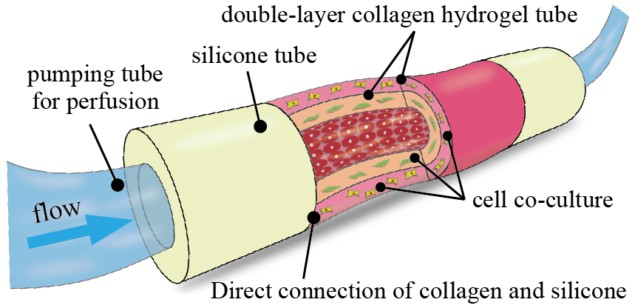

The moulded microtube structure overcomes many of the problems normally associated with in vitro 3D tissue models – which typically consist of cells embedded in a scaffold material. Such models also include vascular-like networks, which play an important role in biochemical reactions and the absorption of drugs into the human body.
Various techniques have been used to make these 3D structures, including bioprinting and soft lithography, but they tend to be complicated. It can also be difficult to connect these tissue models to external perfusion systems because it is no easy task to join hard pumping tubes to soft biological tissue.
Could high-pressure hydrides be high-temperature superconductors?
Could high-pressure hydrides be high-temperature superconductors?
28 Dec 2018 Belle Dumé
Researchers at the Max Planck Institute for Chemistry in Mainz, Germany say that lanthanum hydride (LaH10) could be superconducting at the remarkably high temperature of 250 K (–23 °C), albeit at extreme pressures of around 170 GPa. Meanwhile, another team from George Washington University in the US says that it has found evidence of superconductivity in the same material at even higher temperatures of 280 K (7 °C) under 202 GPa pressures. If confirmed, the findings could be a major step towards finding room-temperature superconductors.
Ultracold atoms close-in on Stoner ferromagnetism
Ultracold atoms close-in on Stoner ferromagnetism
30 Dec 2018 Hamish Johnston
Using ultracold atoms to simulate a model of ferromagnetism that was first proposed 85 years ago has come one step closer because of work done by Matteo Zaccanti of the University of Florence and colleagues in Italy and the US. The team has managed to separate experimental signals from atoms that pair-up to create molecules from signals from free atoms that have aligned their magnetic moments with their neighbours. As well as providing insights into the fundamental nature of magnetic interactions, the research could be used to simulate other interesting systems such as “quantum emulsions”.
While iron is the most familiar magnetic material, the origins of its magnetism are rather murky. It cannot be described simply as a collection of magnetic moments that are fixed in a crystalline lattice because its magnetism arises from the spins of its conduction electrons, which are free to move throughout the material.
Our universe has antimatter partner on the other side of the Big Bang, say physicists
Our universe has antimatter partner on the other side of the Big Bang, say physicists
03 Jan 2019
Our universe could be the mirror image of an antimatter universe extending backwards in time before the Big Bang. So claim physicists in Canada, who have devised a new cosmological model positing the existence of an “antiuniverse” which, paired to our own, preserves a fundamental rule of physics called CPT symmetry. The researchers still need to work out many details of their theory, but they say it naturally explains the existence of dark matter.
Standard cosmological models tell us that the universe – space, time and mass/energy – exploded into existence some 14 billion years ago and has since expanded and cooled, leading to the progressive formation of subatomic particles, atoms, stars and planets.
Εγγραφή σε:
Αναρτήσεις (Atom)




